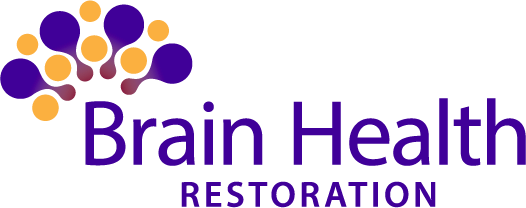When someone mentions the term “executive function,” you might conjure up images of a white-collared worker in a fancy glass office overlooking the park blocks of a fabulous city making important decisions for their company and overseeing the activities of large teams of people.
That image actually runs somewhat parallel in our brains, especially when we are talking about executive function as it relates to our overall health. According to understood.org, executive function is defined as “a set of mental skills that include working memory, flexible thinking, and self-control. We use these skills every day to learn, work and manage daily life. Impaired executive function can make it hard to focus, follow directions and handle emotions.”1
Like a good CEO, the brain’s executive function must be working efficiently and communicating clearly for us to be able to regulate many of our non-automatic body functions.
The Command Center
Executive functions are located mostly in the front of the brain, specifically the prefrontal cortex. Within this region, there are three areas that are more directly related to parts of executive function.
The dorsolateral prefrontal cortex is the processor. This area regulates things like problem-solving, organizational skills, reasoning, planning, shifting hears and abstract thinking.
Next, the anterior cingulate cortex is more dedicated to the emotional drive and integration: inhibitions, inappropriate responses or reactions, apathy, and motivated behaviors.
Lastly, the orbitofrontal cortex is key in the monitoring of ongoing appropriate social behaviors, impulsivity, aggressive outbursts, antisocial behavior to name a few.2
When these functions are not working properly, a number of critical skills for effectively managing our daily lives may show signs of impairment like time management, attention quality, and span, ability to switch focus, planning, and organizing, remembering details, avoiding doing or saying the wrong thing, and maintaining organizational skills. These are all skillsets are necessary to be successful at work, in school and in life in general.3
What Causes Executive Dysfunction?
Genetics can play a part in weakening executive function. Traumatic Brain Injuries (TBI) could be another cause. Studies have also shown a link between Alzheimer’s, cognitive decline and strokes to the condition. Oftentimes, people with depression suffer executive dysfunction too. On the farther end of the spectrum, the result of executive dysfunction can contribute to Autism Spectrum Disorder, ADHD, adult Bipolar Disorder, OCD, and learning disabilities.
Treatment Options
There is no specific medication to help improve executive function, however, some stimulants have been shown to help with improvements in certain areas.4
The use of Transcranial Magnetic Stimulation (TMS) in executive function looks promising. When the magnetic coil is placed on the prefrontal cortex, it activates the part of the brain known to regulate meta-cognition, sophisticated decision-making, conceptual reasoning, and executive function. Over time, the connections between the neurons become stronger, potentially forming long-lasting learning and change in this area of the brain.5
Customize Your Executive Function Treatment
MeRT℠ offers the potential of individualized executive function optimization. The difference between MeRT℠ and TMS is the application of a variable treatment frequency to precisely target the individual’s current brain wave patterns.
MeRT℠ uses three FDA-approved technologies: Quantitative EEG Analysis, Transcranial Magnetic Stimulation, and the EKG analysis of an individual patient’s heart rate. These technologies are married through the intrinsic harmonic relationship between the primary synchronizer of the brain, the alpha rhythm, and the heart rate.
The resultant frequency and coil location generated by MeRT℠ provides an extremely precise and highly individualized treatment protocol. The importance of the individualized frequency and localization by MeRT℠ cannot be overstated.
MeRT℠ is a treatment protocol that is non-invasive, essentially pain-free and with minimal or no side effects and allows you to return immediately to normal everyday activity.
Brain Health Restoration clinic offers Magnetic e-Resonance Therapy (MeRT℠), a fully customized treatment protocol with expected benefits of better sleep, better concentration and focus, memory and reduced depression. To find out more or to see how MeRT℠ might help you please contact us here.
1 “What Is Executive Function?”, understood.org. understood.org/en/learning-thinking-differences/child-learning-disabilities/executive-functioning-issues/what-is-executive-function
2McCalla MS, CCC-SLP, CBIS, Angie. “Executive Functioning – Where is it Controlled and How Does it Develop?/Remediation Techniques for Deficits and Dysfunction. “ Rainbow Rehabilitation Centers. rainbowrehab.com/executive-functioning/
3“Executive Function and Executive Function Disorder.” WebMD.com. webmd.com/add-adhd/executive-function#1
4“Executive Functioning Problems.” Manhattan Psychology Group, PC. manhattanpsychologygroup.com/executive-functioning-problems-adults
5“TMS & Working Memory.” Principium Psychiatry. principiumpsychiatry.com/tms-working-memory/

